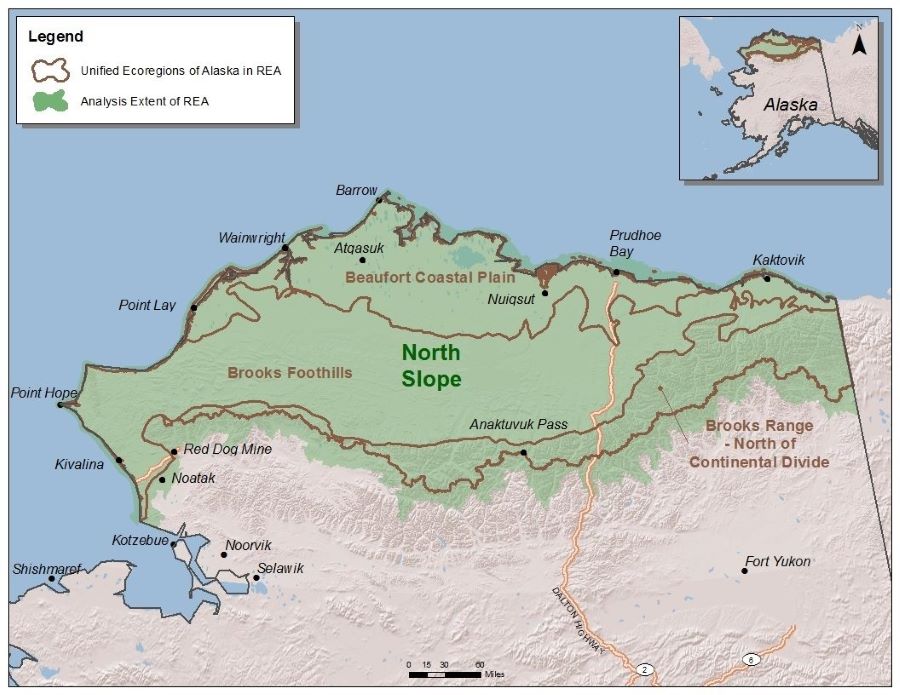Why are salmon increasingly spawning in Arctic rivers?
Recent research led by the University of Alaska Fairbanks (UAF) has confirmed a phenomenon suspected in existence: salmon are spawning in the frigid waters of Arctic Ocean watersheds. This discovery not only sheds light on the adaptability of these iconic fish but also hints at the profound impact of climate change on their habitat.
The scientists taking part in the research, which was published on the UAF website last fall, found approximately 100 chum salmon in the Anaktuvuk and Itkillik rivers on Alaska’s North Slope. These rivers, which feed into the larger Colville River, ultimately empty into the Arctic Ocean. Remarkably, all the captured fish observed in mid-September 2023 were either actively spawning or had just finished, indicating a successful reproductive cycle.

Credit: Wikimedia
The leader of the research team, UAF researcher Peter Westley, says this finding aligns with the hypothesis that salmon are migrating northward as their traditional habitats undergo significant alterations due to climate change. While many established salmon populations in regions like California are dwindling due to warming waters, the Arctic appears to be providing a new haven for these fish.
Westley, an associate professor at UAF’s College of Fisheries and Ocean Sciences, noted,
“Throughout most parts of the salmon’s range, things have gotten too warm and they’re starting to blink off.
In the Arctic, the water is getting warm enough and they’re starting to blink on.”
The roots of this groundbreaking discovery trace back to a December 2022 workshop hosted by Alaska Sea Grant, which brought together scientists, community members, and indigenous fishermen to discuss the increasing presence of salmon in Arctic waters. This gathering played a pivotal role in guiding the research team towards the Colville River watershed, approximately 60 miles southwest of Prudhoe Bay.
It would be wrong to state that salmon are newcomers on the North Slope – some species had lived there before, for thousands of years – but the global warming in recent years forced more of this fish to seek a new home in Arctic waters.
The research team, which included UAF’s Westley and fisheries professor Andy Seitz, graduate students Lindley and Joe Spencer, research assistant Julia McMahon, and University of Washington ecologist Andrew Berdahl, emphasized the significance of these findings for both scientific understanding and local communities.
More to read:
How do ice worms survive in glaciers?
While salmon are renowned for returning to their natal rivers to spawn, they do exhibit occasional deviations from this pattern, particularly when seeking more hospitable environments. As Westley explained, “Straying is part of the biological story of salmon — it’s what they do. It’s a fundamental part of their biology and evolution. In the Arctic, we can see it playing out before our eyes.”
However, whether the salmon's attempts to reproduce in this region have been successful remains uncertain. To address this, researchers have left temperature sensors in some chum salmon nests to monitor whether the rivers freeze completely during the winter, potentially jeopardizing developing embryos. A follow-up expedition is planned for the fall of 2024 to search for smolt or a new wave of spawning adults.
Additionally, analyses of salmon bones and tissues will help determine whether the fish spent their entire lives in Arctic waters.
Alaska, where salmon holds significant cultural and ecological importance, is witnessing a potential paradigm shift as these fish explore new territories.
***
NewsCafe relies in its reporting on research papers that need to be cracked down to average understanding. Some even need to be paid for. Help us pay for science reports to get more interesting stories. Use PayPal: office[at]rudeana.com or paypal.me/newscafeeu.







